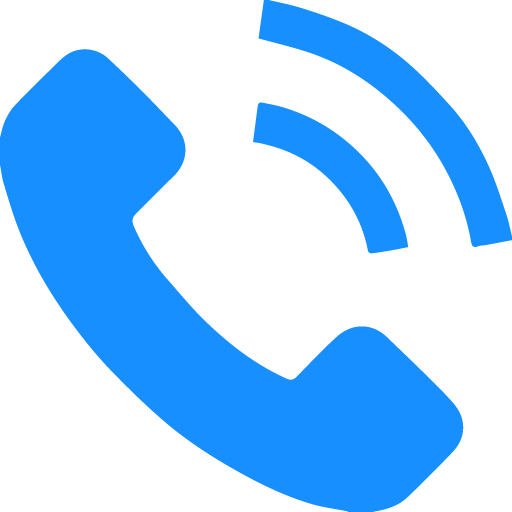Domestic toll-free numbers usually have fewer restrictions and lower costs than their international counterparts. However, in most countries, there is no noticeable difference between an international and domestic toll-free number for the caller. A toll-free number is simply a phone number where the owner is charged for all incurring calls rather than the caller.
Which Countries Use Domestic Toll-Free Numbers?
While most countries have both international and domestic toll-free services, there are only a few countries where the difference is significant. The distinction between international vs. domestic toll-free numbers is fundamental in the following:
Philippines
In the Philippines, domestic toll-free numbers can only be dialed from the Globe network, while ITFS can only be reached from the Sun and Smart cellular networks. Therefore, most companies will buy toll-free numbers for full coverage in the Philippines.
Japan
In Japan, domestic toll-free 0120 numbers are recommended. Japanese domestic toll-free numbers have no mobile restrictions. However, ITFS numbers are handled by many regulators and carriers with different limits, making them less reliable.
New Zealand
In New Zealand, mobile access for ITFS numbers (0800 dial-code) is blocked by default. This is not the case with DTF numbers (0809 dial-code). However, New Zealand’s domestic toll-free numbers are generally more expensive than their alternative. In addition, providers like AVOXI usually disable the default mobile restrictions associated with ITFS numbers before providing them to customers. For this reason, traditional 0800 numbers are still the most preferred toll-free number type for most businesses in New Zealand.
Singapore
In Singapore, all foreign companies are assigned ITFS numbers, recognized by the ‘800’ dial prefix. Singapore-based companies use domestic toll-free numbers, recognized by the ‘1-800’ dial-code. However, there is no difference in functionality between these numbers.
Brazil
DTF numbers cannot be reached from outside of Brazil.
South Korea
ITFS numbers (003 dial-code) are not portable. Therefore, South Korea DTF numbers (0809 dial-code) are recommended for full coverage.
Taiwan
ITFS numbers (801 dial-code) cannot be accessed from the KG Telecom Network. Therefore, Taiwan DTF numbers (0800 dial-code) are recommended for full coverage in the country.
International Toll-Free (ITFS)
International toll-free numbers allow customers to dial free of charge and connect to their designated phone number or IP Address. Toll-free numbers are great for businesses that have a global customer base but want to add a local presence. These numbers also offer additional flexibility with call forwarding functions. This feature enables you to forward and route calls to different locations using Voice over Internet Protocol (VoIP) technology. Call rates vary depending on where the calls terminate and on what device.
Three Primary Factors to Determine Costs
The calling rate per minute charges is country-specific, with three main factors determining the overall rate:
Originating Country
- To determine the rate per minute for your toll-free number service, you first need to establish from what country your calls originate or your customers’ location. For example, if your customers are in Australia, you want an Australia Toll Free Number (ITFS) so that they have no charges on their phone bills when calling your business.
- Using the Australia toll-free number as an example, an ITFS number does offer mobile access, but there is a charge for airtime. On the other hand, an Australian domestic toll-free number (DTF) includes mobile access—with no additional charges.
Terminating Country
- The terminating country is the one where you forward your calls. Usually, this is the country where your employees are located. The terminating country is vital because it impacts your rate per minute. This rate varies depending on the country in which your call terminates.
- Again, using the Australia toll-free number as our example, let’s say that you set your call forwarding to terminate in the Philippines. Furthermore, your termination rate is associated with a different rate than a call ending in the United Kingdom.
- A blended rate for landline, fixed-line, and mobile is increasingly popular in many countries. With a blended or “mixed rate,” your termination rate is an average across all termination rates, including landline and mobile. This means that there is one termination rate regardless of the device.
Device: Mobile vs. Landline vs. VoIP
- The decision to choose between mobile or landline services isn’t always apparent. While there are benefits to receiving calls over a traditional landline service, such as quality and reliability, there may be associated costs. Sending calls from your toll-free number to a landline is usually more expensive than receiving calls on a VoIP phone. Any time calls transmit over the Public Switched Telephone Network; you are subject to additional charges from the telephone company. Fundamentally, this increases your rate per minute.
- Forwarding or routing calls to a mobile device is standard for people who work remotely or need the flexibility to take calls while away from the office. Similar to landline services, the cell phone carrier may add additional fees for transmitting the incoming call. However, international plans and long-distance options are often available and offer more competitive rates.
- The most cost-effective method for receiving calls is through your Internet connection using a Voice over IP enabled phone or softphone. VoIP calls don’t transmit through traditional phone lines or mobile carriers, making them far less expensive. All you need to receive a VoIP phone call is a softphone on your laptop and an Internet connection.
- One thing to be aware of is the restrictions or added fees when roaming to certain countries. For instance, the countries of China, Brazil, and Greece restrict mobile service; but it is available in other countries at a premium rate. Potentially, there are also different access issues, such as payphone restrictions. But, again, your service provider can guide you through the coverage and restriction details of each country.
- Additionally, each country has its restrictions and added fees for particular services.
Who Can Call My Phone Number: ITFS
An International Toll-Free number is like the US Toll-Free number mentioned above; instead, it is country-specific for other countries worldwide. The prefix and dialing format look different depending on the country. An example is AVOXI’s UK toll-free number: 0800 652 5029 .
.
The one thing to keep in mind about toll-free numbers is that they’re country-specific. They only work in the country for which you bought them. So if you have an interest in these numbers, make sure you get one for every country in which you have customers.
